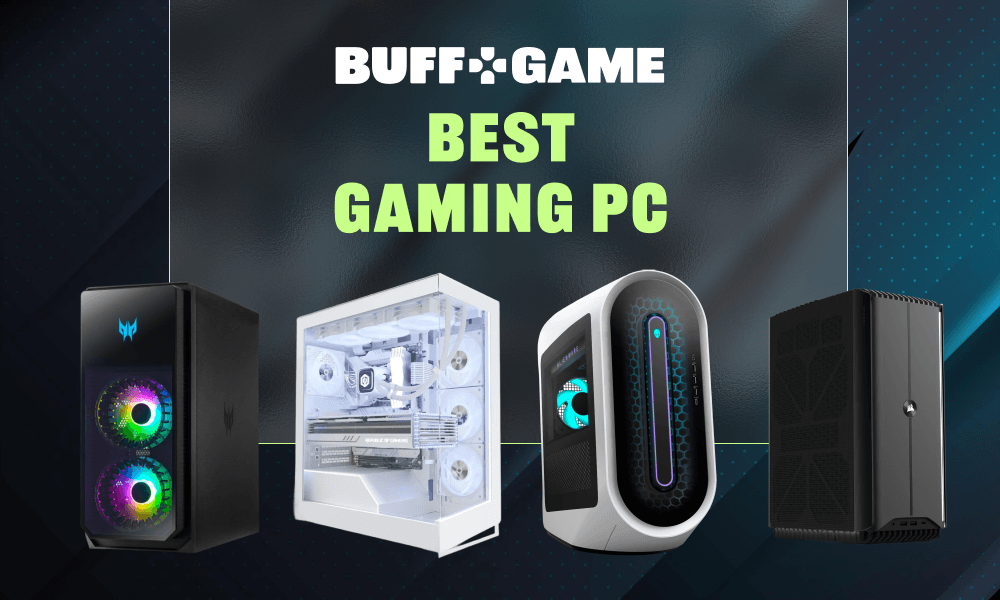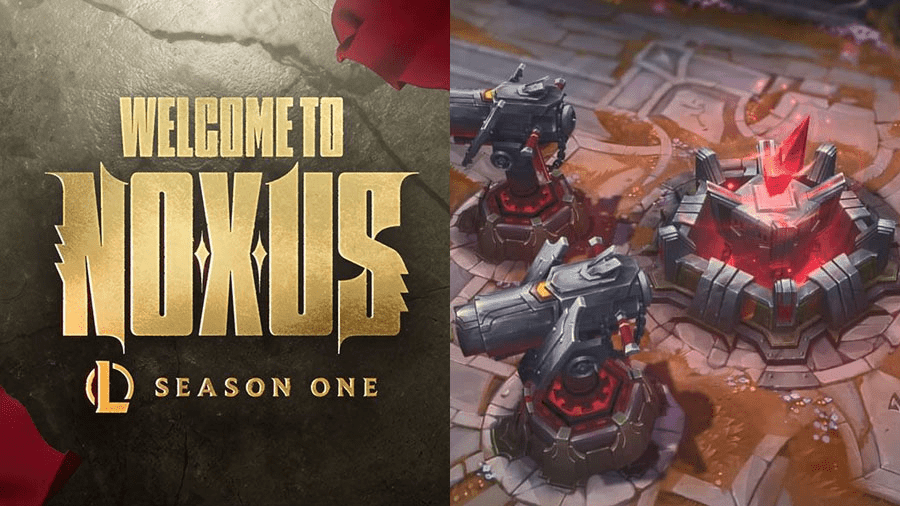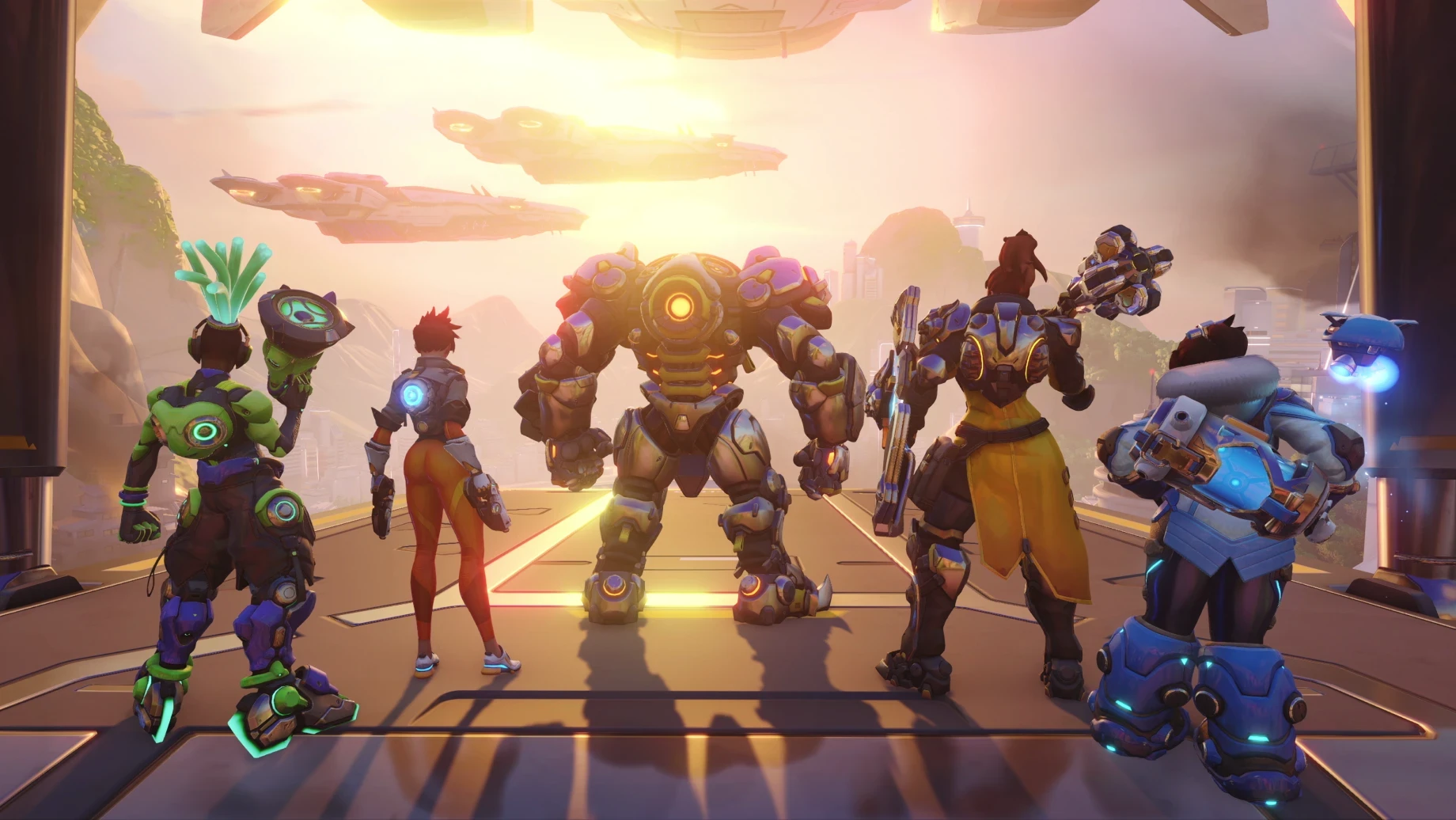Buying a gaming PC in 2025 can feel overwhelming. There are compact desktops and towering full‑size cases, and prices range from a few hundred dollars to well over $4,000. Whether you’re chasing ultra‑smooth frame rates, need a small system for a cramped desk or want a machine that can game and stream at the same time, this guide highlights our favourite pre‑built options. Each pick comes from hands‑on testing that looked at performance, thermals and build quality. A shopping guide and answers to common questions follow to help you choose the right PC.
This is not a sponsored or commercial review, so you won’t find product links scattered throughout. If our recommendations help you pick a system, please leave a comment—we’d love to hear your feedback.
Best Overall: Acer Predator Orion 5000
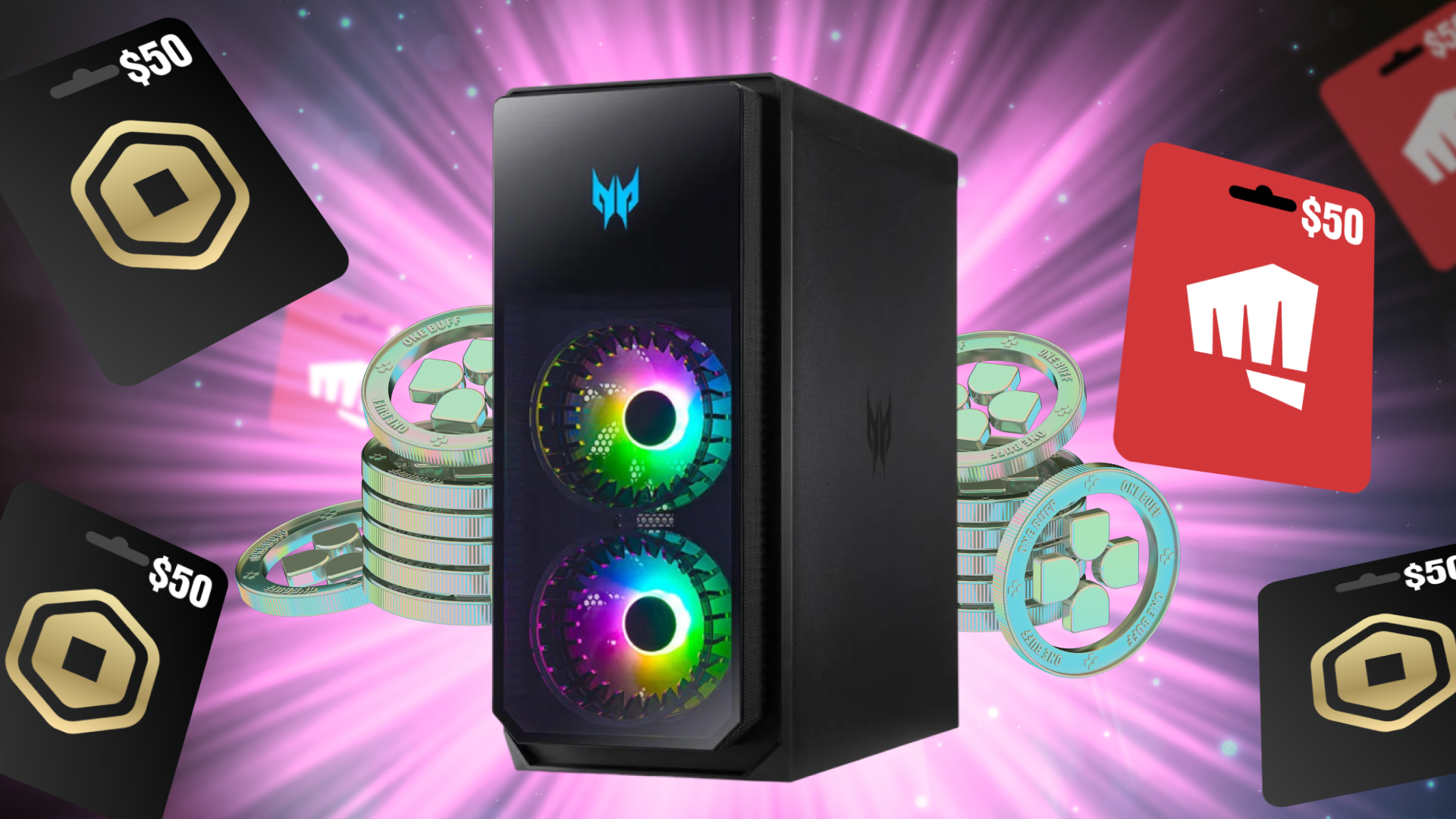
- CPU: Intel Core i7‑14700F (20 cores)
- GPU: Nvidia GeForce RTX 4070 Super
- Motherboard: micro‑ATX B760
- Memory: 32 GB (2 × 16 GB) DDR5‑4500
- Storage: 1 TB PCIe 4.0 SSD
- Power: 800 W 80 Plus Gold
- Pros: Great value; strong 1080 p and 1440 p performance; ample front I/O
- Cons: Basic motherboard; stock cooler can be loud; limited lighting control
The Predator Orion 5000 gets our top pick because it balances price and performance so well. The 20‑core Core i7 and RTX 4070 Super combination breezed through our 1080 p benchmarks and handled 1440 p gaming without trouble. There’s even enough muscle to dip into 4 K if you enable DLSS. A tidy interior and front USB‑C ports make upgrades straightforward. The micro‑ATX board and blower‑style GPU cooler are concessions to cost, but the street price often falls near US$1,500, making this system hard to beat.
Best Budget 1080 p Rig: CyberPower Esports Essential
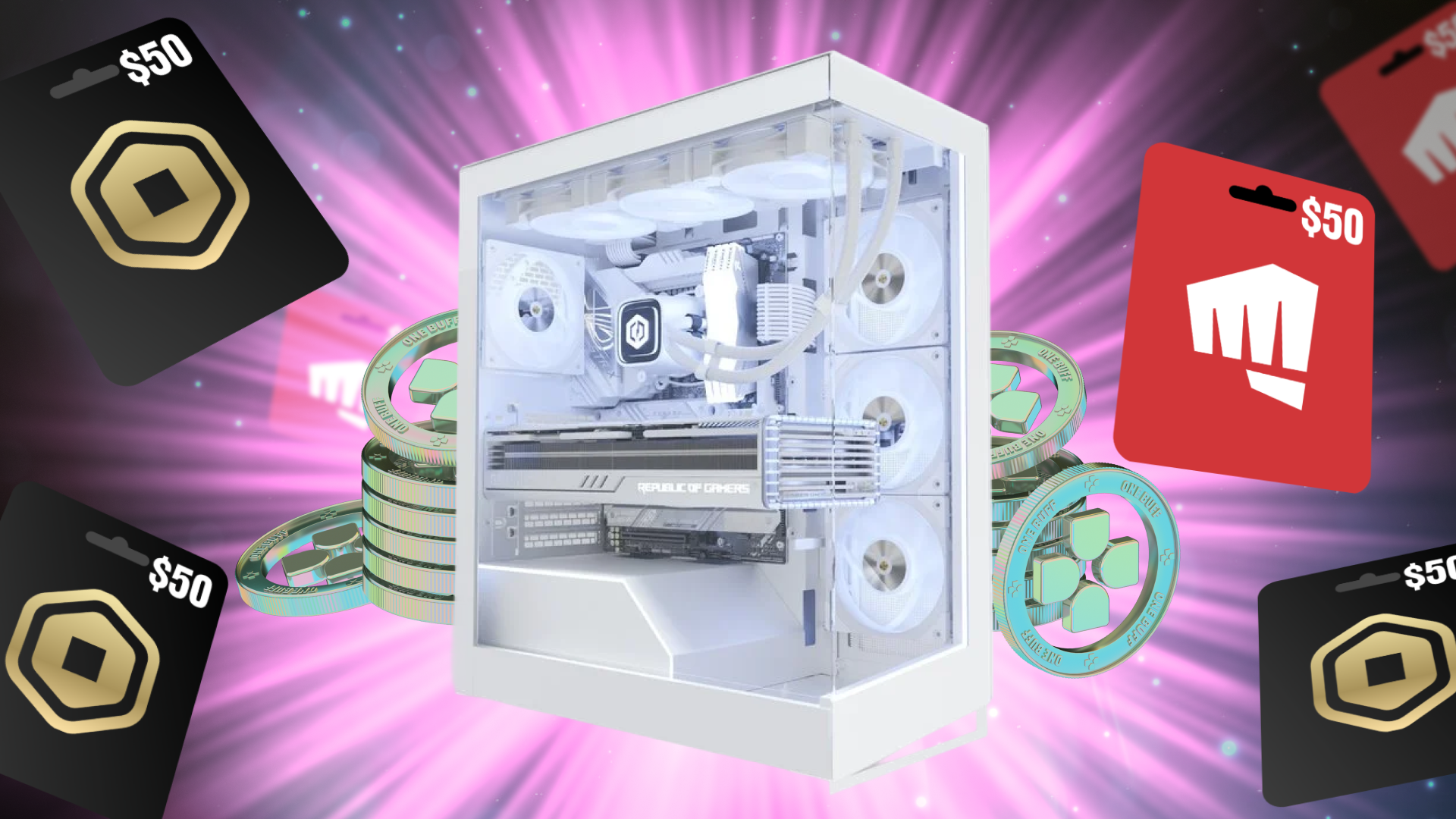
- CPU: AMD Ryzen 7 8700F (8 cores/16 threads)
- GPU: Nvidia GeForce RTX 4060
- Motherboard: Gigabyte B850 Gaming Wi‑Fi 6
- Memory: Up to 32 GB DDR5‑6000; base model uses a single 16 GB stick
- Storage: 1 TB NVMe SSD
- Power: 600 W 80 Plus Gold
- Case: Phanteks NV5s mid‑tower with dual glass panels
- Pros: Affordable; stylish chassis; easy to upgrade
- Cons: Ships with single‑channel memory; power supply limits future GPU swaps
CyberPower’s Esports Essential is tailored for smooth 1080 p gaming. Pairing AMD’s Ryzen 7 8700F with an RTX 4060 delivers dependable frame rates in e‑sports titles and many modern games on medium to high settings. The spacious NV5s enclosure has tempered‑glass panels on two sides and room for additional drives or a larger power supply. While the base configuration ships with a single 16 GB RAM module, upgrading to a dual‑channel kit unlocks more performance and stability. At roughly US$1,100, this system is a smart choice for first‑time PC gamers on a budget.
Best Mid‑Range: Alienware Aurora R16 (2025)

- CPU: Intel Core Ultra 7 265KF
- GPU: Nvidia GeForce RTX 5070 Ti
- Motherboard: Alienware Z890
- Memory: 32 GB DDR5‑6400
- Storage: 1 TB PCIe 4.0 SSD
- Power: 1,000 W 80 Plus Platinum
- Case: Compact tower with AlienFX lighting and tool‑less side panel
- Pros: Strong 1440 p gaming; distinctive case; quiet cooling
- Cons: CPU isn’t as fast as AMD’s gaming‑focused chips; limited storage; cable management could be better
The 2025 Aurora R16 pairs Nvidia’s RTX 5070 Ti with Intel’s Core Ultra 7 265KF. The graphics card’s 16 GB of GDDR7 memory gives it headroom for high‑resolution textures and ray tracing, and we observed triple‑digit frame rates in many 1440 p games. The compact chassis looks futuristic and stays quiet thanks to a 240 mm liquid cooler. The 265KF processor is competent for general use but falls behind AMD’s X3D chips in pure gaming workloads, so competitive players chasing the highest frame rates may want to look elsewhere. A 1 TB SSD also feels cramped in a system this expensive, but frequent sales make the Aurora more tempting.
Best Compact PC: Corsair One i500

- CPU: Intel Core i9‑14900K
- GPU: Nvidia GeForce RTX 4080 Super (16 GB) or optional RTX 4090
- Motherboard: MSI B760M Mortar Wi‑Fi
- Memory: 32 GB Corsair Vengeance DDR5‑6000
- Storage: 2 TB NVMe SSD
- Power: 1,000 W SFX
- Case: 15.3 × 11.8 × 7.6 in mini‑tower with wood accents
- Pros: Outstanding performance in a tiny chassis; elegant design; quiet operation
- Cons: Very expensive; GPU upgrade requires shipping the unit back to Corsair
Corsair’s One i500 proves that a mini PC can compete with full‑sized rigs. This petite tower uses a custom liquid cooling loop to tame a Core i9‑14900K and an RTX 4080 Super or 4090. In our tests the system delivered silky‑smooth 4 K gaming and remained surprisingly quiet even when under load. The wood‑panelled exterior and subtle lighting look refined on a desk. Because everything is tightly integrated, replacing the graphics card isn’t something you can do at home, and the asking price tops US$3,500. If you value both aesthetics and raw performance and have the budget to match, the One i500 is exceptional.
Best for Streamers: NZXT Streaming Pro PC
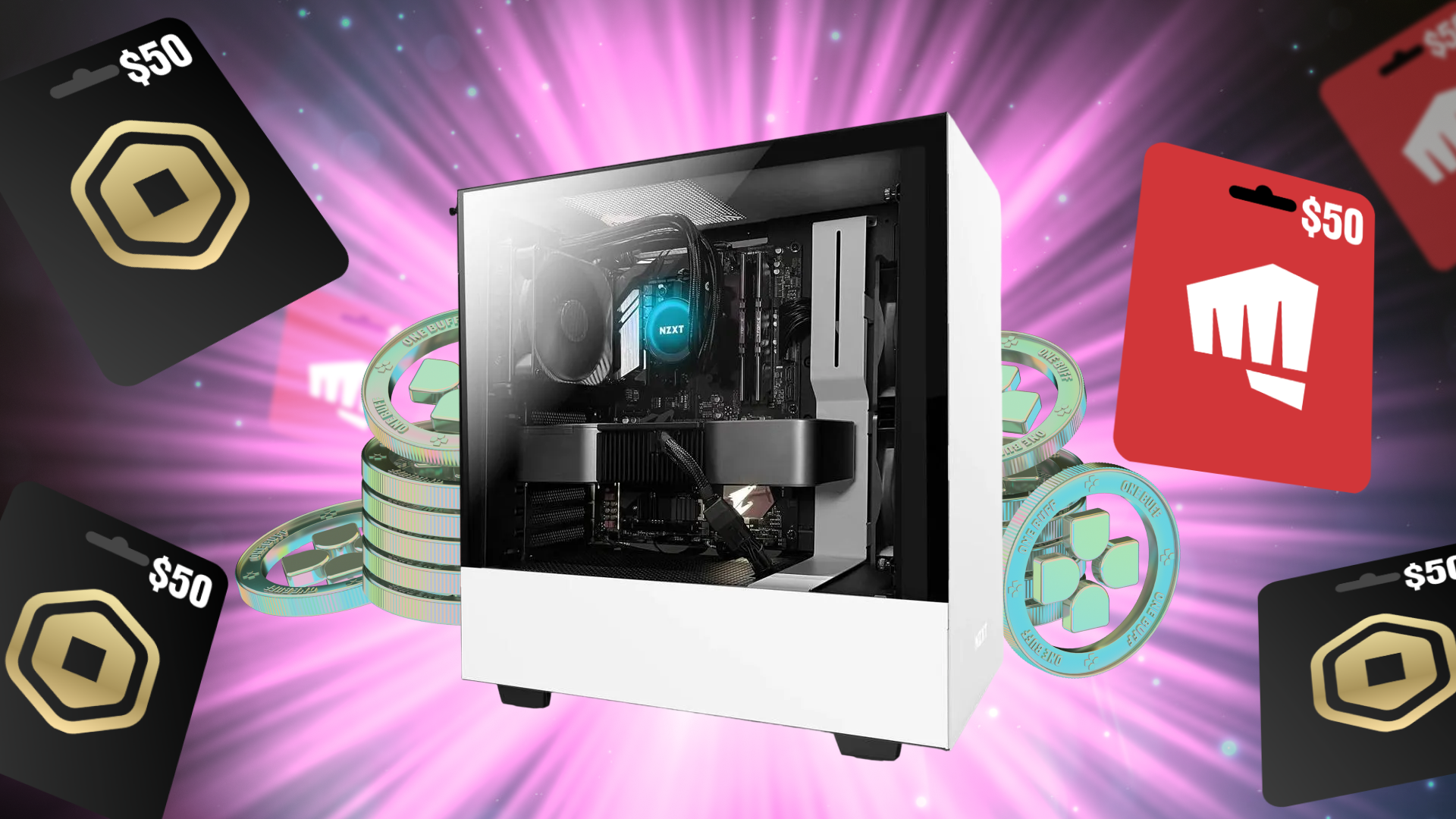
- CPU: AMD Ryzen 7 5800X
- GPU: Nvidia GeForce RTX 3080
- Motherboard: AMD B550
- Memory: 32 GB DDR4‑3200
- Storage: 1 TB NVMe SSD
- Power: 750 W 80 Plus Bronze
- Case: NZXT H510 Flow
- Pros: Great for gaming and encoding simultaneously; plentiful USB ports; clean design
- Cons: Uses last‑generation DDR4 memory; pricier than gaming‑only machines
Streamers need a system that can game and encode video at the same time. NZXT’s Streaming Pro PC combines a Ryzen 7 5800X with an RTX 3080 to deliver eight cores of CPU power and Nvidia’s NVENC hardware encoder. This allows you to broadcast high‑quality streams via OBS or Discord without tanking game frame rates. The H510 Flow case has mesh panels for airflow and ample front‑panel connectivity for microphones, capture cards and webcams. While the build relies on older DDR4 memory and a previous‑generation processor, it remains a reliable plug‑and‑play option for content creators.
Best 4 K Powerhouse: MSI MEG Trident X2 14th Gen
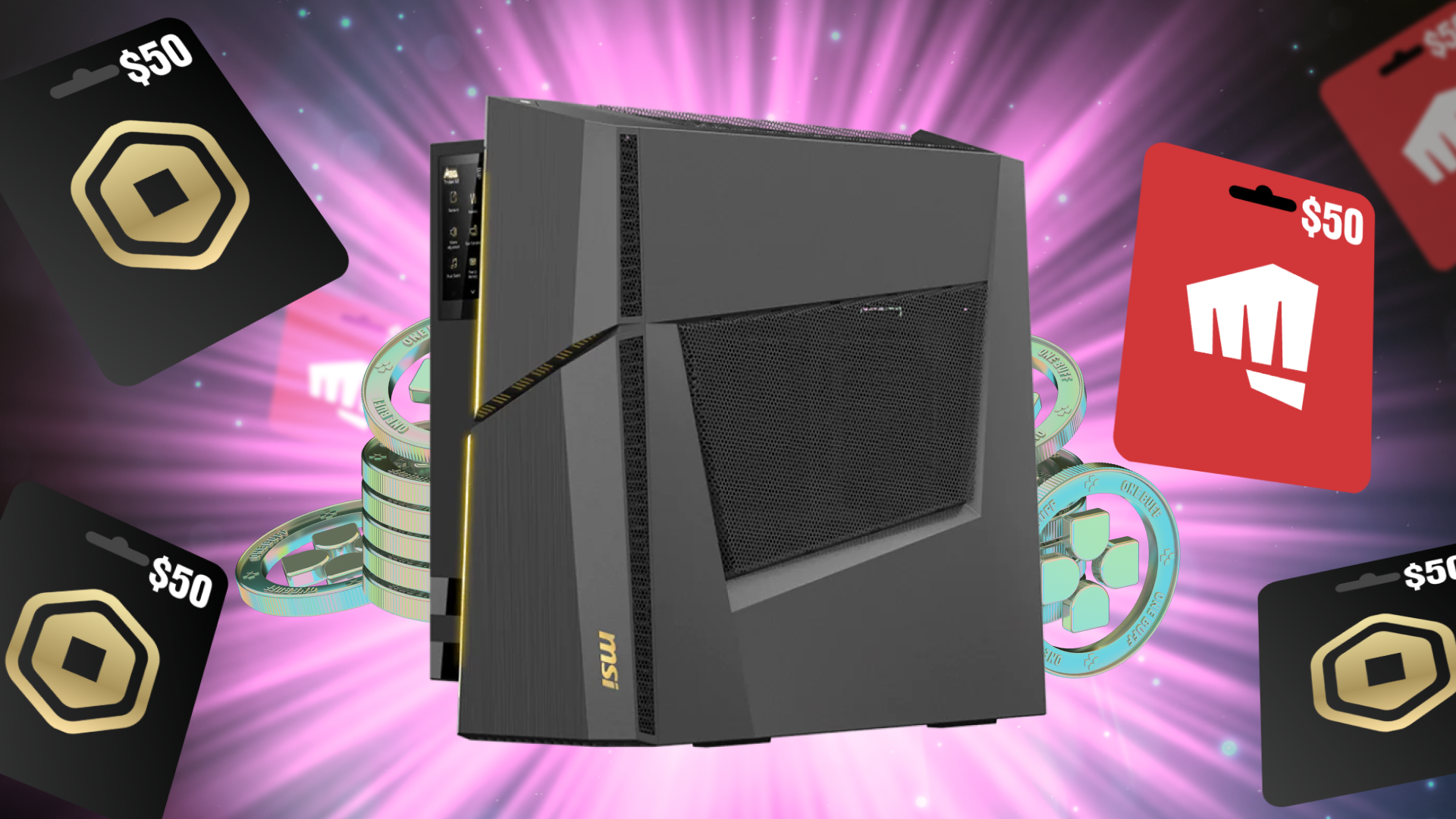
- CPU: Intel Core i9‑14900KF
- GPU: Nvidia GeForce RTX 4090 (24 GB)
- Memory: 64 GB DDR5
- Storage: 2 TB NVMe SSD plus 2 TB hard drive
- Cooling: 240 mm AIO liquid cooler and ducted GPU airflow
- Power: 1,000 W
- Case: Compact mid‑tower with touchscreen front panel
- Pros: Exceptional performance at 4 K; efficient cooling; well‑balanced configuration
- Cons: Expensive; understated exterior lacks RGB flair; few configuration options
The MEG Trident X2 is MSI’s flagship gaming desktop. Built around Intel’s top‑tier Core i9‑14900KF and Nvidia’s RTX 4090, it effortlessly delivers triple‑digit frame rates at 1440 p and maintains smooth 60 fps or better at 4 K even in demanding games. A reversed motherboard layout and a 240 mm liquid cooler manage heat quietly, while a ducted path channels fresh air to the graphics card. The front panel features a touch display for monitoring system stats and controlling lighting. It costs around US$4,000 and doesn’t offer much in the way of customisation, but if you want future‑proof power in a sleek tower, the Trident X2 stands out.
Best Water‑Cooled Custom Build: CyberPower PC Hyper Liquid
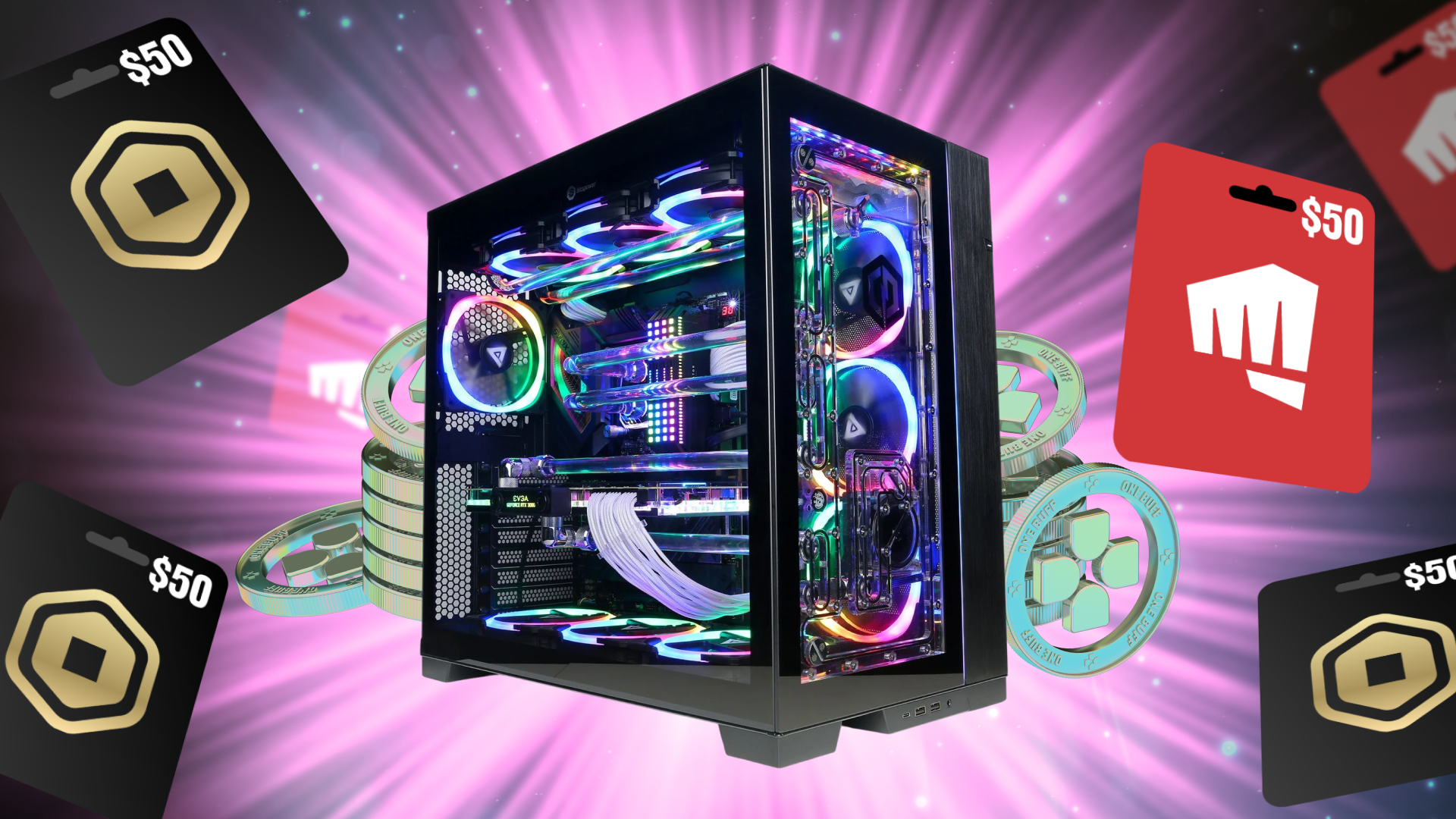
- CPU: Up to Intel Core Ultra 9 285K or AMD Ryzen 9 9800X3D
- GPU: Up to Nvidia GeForce RTX 5090 or AMD Radeon RX 9090 XT
- Memory: Up to 64 GB DDR5‑6400
- Storage: Up to 4 TB Samsung 990 Pro or 8 TB WD SN850X
- Power: Up to 1,350 W
- Case: Lian Li O11 Dynamic Evo RGB with custom liquid loop
- Pros: Bespoke water cooling; broad component choice; three‑year warranty
- Cons: Fragile cooling system during shipping; cost scales quickly with options
CyberPower’s Hyper Liquid line lets you design a dream PC without the hassle of building it yourself. You can choose from the latest Intel or AMD processors and pair them with cutting‑edge graphics cards up to the RTX 5090. The custom liquid loop keeps temperatures low and makes the build look stunning through the O11 Dynamic Evo’s tempered‑glass panels. A generous warranty covers parts and labour, including the water loop. Be aware that liquid‑cooled systems are more susceptible to damage in transit and that prices climb steeply as you select higher‑end parts.
Best RTX 5080 Rig: Acer Predator Orion 7000
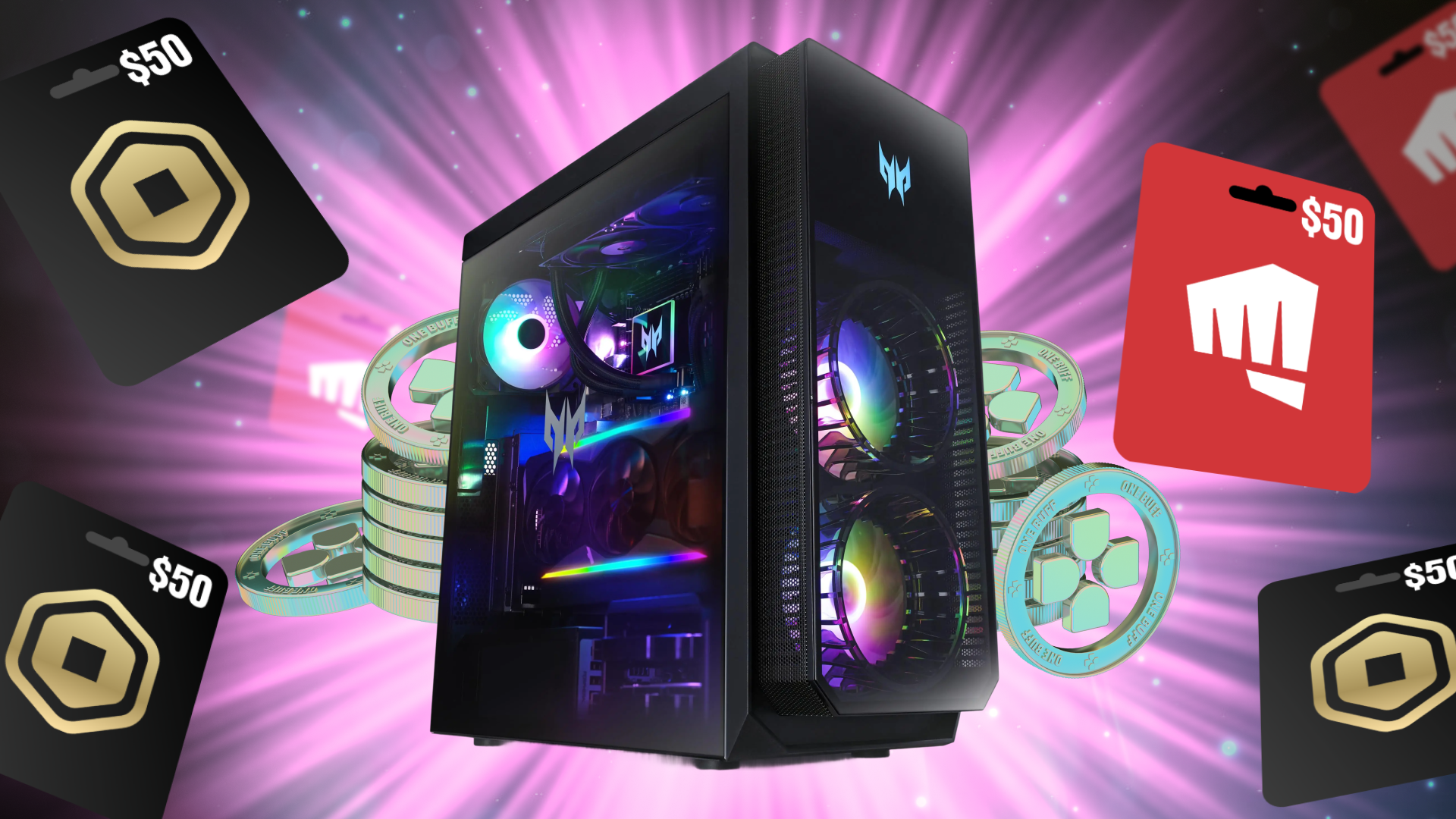
- CPU: Intel Core Ultra 7 265KF
- GPU: Nvidia GeForce RTX 5080
- Motherboard: Z890
- Memory: 32 GB DDR5‑6000
- Storage: 2 TB PCIe 4.0 SSD
- Power: 1,200 W
- Cooling: 360 mm AIO liquid cooler
- Pros: Strong 1440 p and 4 K performance; tidy interior with vertical GPU mount; plenty of cooling headroom
- Cons: Pricey; CPU lags behind AMD’s best; large footprint
The Predator Orion 7000 pairs an RTX 5080 with Intel’s Core Ultra 7 265KF and 32 GB of RAM. In our testing the system delivered buttery‑smooth 1440 p gameplay and, with DLSS enabled, topped 150 fps at 4 K in titles like Cyberpunk 2077 and Doom: The Dark Ages. A 360 mm all‑in‑one cooler keeps the processor cool and quiet, and the spacious chassis uses a vertical GPU mount to maximise airflow. The 2 TB SSD offers plenty of game storage. However, the Ultra 7 chip doesn’t match AMD’s Ryzen X3D processors in gaming, and the case occupies a lot of desk space. At around US$3,300, it’s a premium but future‑ready choice for high‑refresh‑rate gaming.
Also Tested
Our lab evaluates dozens of pre‑built systems each year. Machines that didn’t make the primary list include the Maingear MG‑1, which offers strong component selections but lacked the overall polish of our top picks; the Corsair Vengeance a7500, a well‑balanced AMD‑powered alternative; and the CyberPowerPC Gamer Supreme, a budget‑friendly rig that performed well at 1080 p but had a plain design. Keep an eye on these as potential buys if you find them heavily discounted.
How to Choose a Gaming PC
Selecting the right gaming PC involves balancing performance, budget and future upgradability. Here are key factors to keep in mind:
- DIY or pre‑built: Building your own PC can save money and give you full control over components, but it takes time and research. Pre‑built systems come assembled, tested and include a warranty and customer support.
- Custom vs. off‑the‑shelf: Custom builders let you specify nearly every part. Off‑the‑shelf systems often ship faster and may come with promotional discounts. Decide whether you value personalisation or convenience.
- Size and upgrade path: Mini PCs like the Corsair One i500 are attractive and compact but can be harder to upgrade. Mid‑towers such as the Orion 5000 or Esports Essential offer easier access and room for larger components. Full‑size cases provide the most expansion room but take up more space.
- Graphics card selection: The GPU has the biggest impact on gaming performance. For reliable 1080 p gaming, an RTX 4060 or Radeon RX 7600 is sufficient. High‑refresh‑rate 1440 p gaming benefits from cards like the RTX 5070 or Radeon RX 9070 XT, which typically push system prices into the US$1,200–1,500 range. For 4 K gaming you’ll want at least an RTX 5080, RTX 5090 or Radeon RX 9090 XT; expect to spend over US$2,000.
- CPU and memory: Modern games use multiple cores, but spending on the very fastest CPU yields diminishing returns. Aim for at least 16 GB of RAM; streamers or content creators should consider 32 GB or more.
- Storage: An NVMe SSD makes a noticeable difference in load times. Look for a system with at least 512 GB for the operating system and a few games. You can add more SSDs or a hard drive later if needed.
How We Test
Our testing regimen focuses on real‑world gaming performance. We run recent titles such as Cyberpunk 2077, Indiana Jones and the Great Circle and F1 24 across multiple resolutions with ray tracing and upscaling features enabled where supported. Each benchmark runs at least three times, with outliers discarded and averages reported. We consider a game smooth when the average frame rate reaches 60 fps and minimums stay above 45 fps. To supplement gaming data, we run synthetic benchmarks like 3DMark and Cinebench to measure GPU and CPU performance. We also evaluate build quality, thermals, noise levels, cable management and upgradability. The goal is to identify PCs that offer the best combination of performance, value and reliability.
Final Thoughts
A gaming PC is a major purchase, and the right choice depends on your budget, the games you play and how you plan to use your machine. The Acer Predator Orion 5000 stands out as the best overall pick because it balances price and performance. If you want something smaller, the Corsair One i500 offers incredible power in a stylish mini‑tower. High‑refresh 1440 p gaming is a sweet spot right now, with GPUs such as the RTX 5070 Ti delivering smooth performance without the exorbitant cost of a 5090. For 4 K purists, the MSI MEG Trident X2 and Acer Predator Orion 7000 show what’s possible when price isn’t a barrier. Whatever you choose, taking advantage of Buff Points on portal.buff.game while you shop can add a little extra fun to the process.
Share this:
